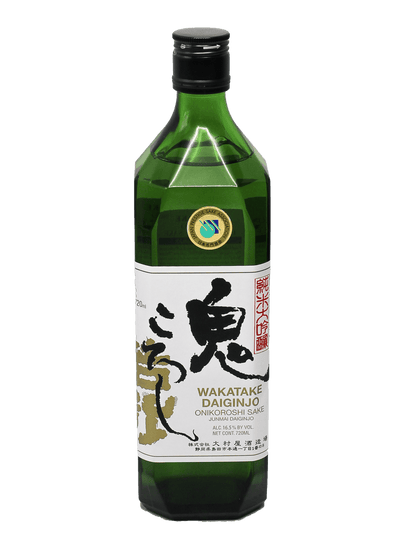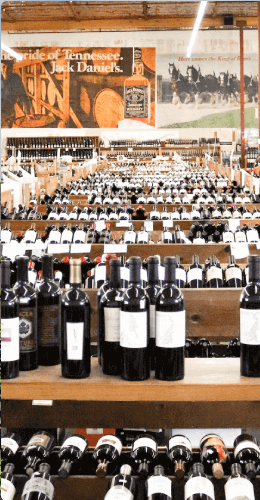All You Need to Know About Sherry Wines

What is sherry wine? Is all Sherry sweet or is there dry Sherry wine? Is Sherry cooking wine the same as Sherry drinking wine? How many kinds of Sherry exist?... We know that there are a lot of questions in your mind about sherry and you are going to find answers to all these questions in this ultimate Sherry wine guide.
What is Sherry Wine?
Sherry, or the vinous products made in the Jerez region of Andalusia, Spain, is a fascinating, complex, and deliciously varied world of wine. Jerez wines offer much more than just your great aunt’s favorite tipple, which was likely a sweet Cream Sherry. Have you heard of Fino, Oloroso, and Palo Cortado? Let’s explore the world of Sherries.
The Region, Grape Varietals, and Sherry Wine Styles
First, Sherry is not a single wine; it is a variety of wines, often made using distinct enological techniques, that come from one legally defined region. The Jerez Denomination of Origin (D.O.), also known as Jerez-Xérès-Sherry, is one of Spain’s most historic and distinctive wine regions. Located in Andalusia, in the province of Cádiz, the DO encompasses the "Sherry Triangle." This includes the towns of Jerez de la Frontera, Sanlúcar de Barrameda, and El Puerto de Santa María. The D.O. is famous for producing fortified wines using what’s called the “solera system.” Here, a fractional blending method ensures the consistency and complexity of the different wines.
Jerez’s climate is starkly Mediterranean, although it has strong Atlantic influences. This means hot, dry summers and mild, humid winters. The region’s defining soil type is termed “albariza,” a chalky white limestone-rich earth that retains moisture and is ideal for growing Palomino, the primary grape used in Sherry production. Other key varieties include Pedro Ximénez (often seen as PX on labels) and Moscatel. These grapes are used for sweeter styles, but far from everything is sweet.
Also Read: Port vs Sherry: Know the Difference
How Many Kinds of Sherry Exist?
Sherry comes in several distinct styles, ranging from bone-dry to intensely sweet. While many people love to drink sherry wine, many people also use sherry wine for cooking, and here drinking sherry wine and cooking sherry wine are not the same at all as cooking sherry wine has a lot of salt added. People love to drink sherry wine often thought of as just a sweet wine, sherry's diversity offers something for every palate. Here are the main types produced in Spain's sherry region:
Sherry for Drinking
Yes, Sherry wines range from bone-dry to intensely sweet, classified primarily by their aging method—biological aging (under a layer of live yeast called flor) or oxidative aging (exposed to the air without the yeast cover). There are many different wines, each one worth trying:
Dry Sherry Wines
-
Fino – A dry sherry wine aged under flor (biological aging) in Jerez and El Puerto de Santa María. It is pale, delicate, and marked by almond, yeast, and saline notes.
-
Manzanilla – Essentially a Fino made exclusively in Sanlúcar de Barrameda, where the maritime climate fosters a thicker flor layer. This results in a lighter, crisper, and saltier profile compared to Fino.
-
Amontillado – Begins aging biologically under flor but later undergoes oxidative aging after the flor disappears. The result is an amber-colored dry sherry wine with nutty, caramelized, and sometimes mildly spicy flavors.
-
Oloroso – Aged entirely oxidatively, developing a dark mahogany color with rich, full-bodied flavors of dried fruit, toffee, and walnuts. Unlike Fino or Amontillado, Oloroso does not retain its flor and thus gets exposed to the air.
- Palo Cortado – A rare style that starts like a Fino or Amontillado but unexpectedly loses its flor and ages oxidatively. It combines the elegance of Amontillado with the depth of Oloroso.
Sweet Sherry Wines
-
Pedro Ximénez (PX) – Made from sun-dried Pedro Ximénez grapes, resulting in an intensely sweet, dark, and viscous wine with flavors of raisins, figs, molasses, and coffee.
-
Moscatel – Another naturally sweet style, typically made in Chipiona from Moscatel de Alejandría grapes, showcasing floral and orange blossom notes.
- Cream Sherry – A sweetened blend of Oloroso and PX, designed to appeal to those who prefer a richer, sweeter style.
Many of these wines pair wonderfully with food, but can also serve as aperitifs or dessert wines. The sherry wine price is usually quite reasonable for the quality. Lustau Solera Los Arcos Dry Amontillado Dry Sherry, for example, has won many accolades and sells for just $15.99 when you buy sherry online. Harvey’s Bristol Cream is the same price. Which is the best sherry wine? You have to try them to find which sherries meet your personal taste. Lustau and Alvear are great producers.
Sherry for Cooking
Many people associate Sherry wines with cooking, but Sherry is not just a cooking wine, as you can see above. Sherry can add a great depth of flavor to dishes. Because they are stable wines, with a high alcohol content, they will also last in your kitchen for weeks without turning sour. This makes them good cooking wines.
Sherry Wine Substitute for Cooking
If you run across a recipe that includes Sherry as an ingredient, and you haven’t yet been able to buy Sherry online, do not fret. You can substitute any dry white wine, like a Chardonnay, or an inexpensive Greek white wine.
We hope you enjoyed learning about Sherry, the region, and its wines. Do not forget to peruse the best online wine stores for a variety of the best Sherry wine options. Please leave us a question or comment below!


















Leave a comment